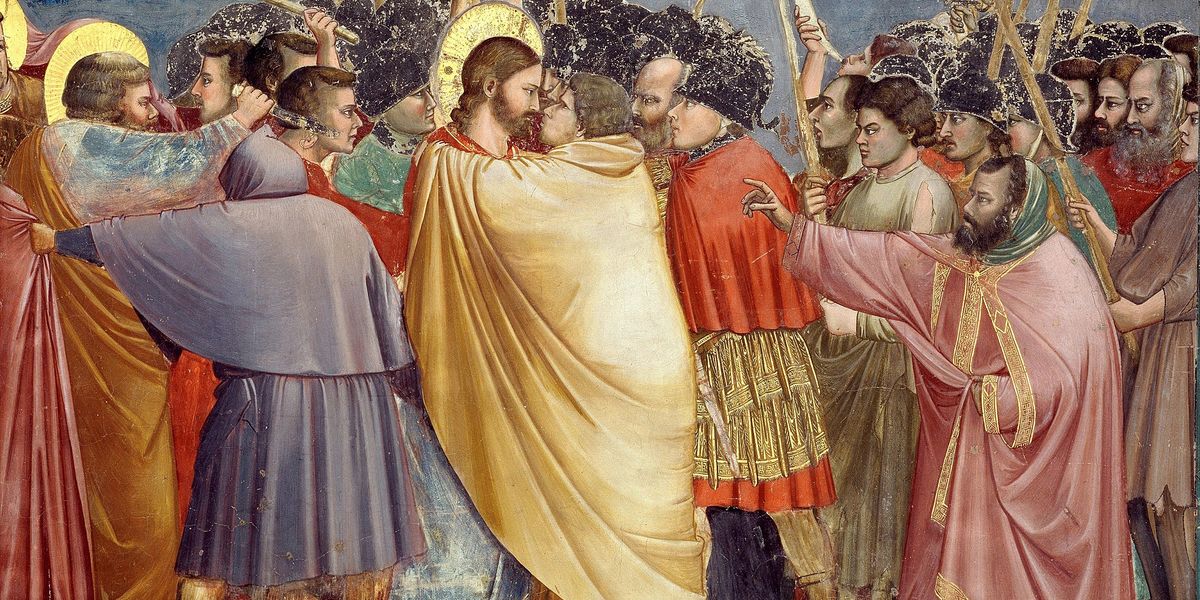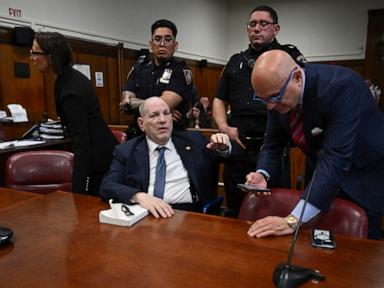

Since the earliest times, the Catholic Church has commemorated the Wednesday of Holy Week as Spy Wednesday, the day Judas Iscariot slipped away to negotiate the traitor’s price to turn Jesus Christ over to the chief priests in Jerusalem.
The betrayal of Judas deserves plenty of attention as we prepare to recall Christ’s Passion and death on Good Friday. The remembrance of Judas’ treachery serves as a warning to all, important enough to have its own commemoration on a weekday traditionally associated with bodily mortification.
'They weighed for my wages thirty pieces of silver.'
The chief priests were actively looking for a means to seize Jesus without triggering a riot. As they deliberated, suddenly Judas appeared, seeking an audience.
“The chief priests and the scribes sought how they might put Jesus to death; but they feared the people,” wrote Dom Prosper Guéranger, the late French abbot and author of the comprehensive 15-volume series "The Liturgical Year."
“And Satan entered into Judas, who was surnamed Iscariot, one of the twelve; and he went, and discoursed with the chief priests and the magistrates, how he might betray him to them. And they were glad, and covenanted to give him money. And he promised; and he sought opportunity to betray him in the absence of the multitude.
“They admit him and he says to them, ‘What will you give me and I will deliver him unto you?’” (from Matthew 26:15) Guéranger wrote. “They are delighted at this proposition and yet, how is it, that they, doctors of the law, forget that this infamous bargain between themselves and Judas has all been foretold by David in the 108th Psalm?
 Judas Iscariot settled for 30 pieces of silver, the price of a slave, to betray Jesus Christ.P. Molnar/Wikimedia Commons
Judas Iscariot settled for 30 pieces of silver, the price of a slave, to betray Jesus Christ.P. Molnar/Wikimedia Commons
“They know the Scriptures from beginning to end — how comes it,” Guéranger wrote, “that they forget the words of the prophet, who even mentions the sum of thirty pieces of silver?”
Thirty pieces of silver was typically the price of a slave. The amount of this shameful bargain is mentioned in Zechariah 11:12, “And they weighed for my wages thirty pieces of silver.” The words of the prophets, which would have been clear to these men who plotted against Jesus, did not give them pause as they prepared to carry out the gravest crime in history.
“On this day, Judas leaves his Master, and takes the devil for his guide,” Guéranger wrote. “The love of money blinds him. He fell from the light, he became darkened; for how could he be said to see, who sold the Light for thirty pieces of silver?”
According to the Jewish historian Josephus, there were about 2.7 million people in Jerusalem to celebrate the Passover. The people had welcomed Jesus as a king on Palm Sunday, laying their cloaks and palm branches along the path as he rode into Jerusalem on a donkey.
Jesus was determined to eat the Passover alone with his apostles. So he frustrated Judas’ scheming by the way he selected the place to eat the Passover meal.
'This sort of talk is hard to take. Who can stand it?'
“Our Lord knows that Judas had sold him and is about to betray him and Judas therefore is laying plans,” said Venerable Archbishop Fulton J. Sheen in one of his Holy Week discourses. “Our Lord now begins to thwart his plans.”
How does our Lord do it? He says to some of his disciples, go into the city and you will find a man with a water pot on his head. Ask him, where has he prepared the house for the Passover meal? The disciples went into the city. They found a man with a water pot on his head. Why did our Lord use that particular sign?Well, because men never carry water pots on their head. Women carry water pots on their head. That would be just like saying, go into the city and find a man who's carrying a pink parasol. So the disciples then found the man who had prepared the upper room. Judas therefore did not know where he was being led. Our Lord wanted the last meal alone with his apostles, and Judas would now have to come with him and no one would know except the disciples who met the man with a water pot on the head.
 The Agony in the Garden.Giovanni Bellini, public domain, via Wikimedia Commons
The Agony in the Garden.Giovanni Bellini, public domain, via Wikimedia Commons
Why did Judas go on his spy mission, scheming to betray his Redeemer? Sheen said a popular theory was that Judas had succumbed to avarice. But despite some evidence for this in Scripture, Sheen said the downfall of Iscariot’s faith came when Christ introduced the Holy Eucharist while teaching in the synagogue at Capernaum.
“In truth, in very truth I tell you, unless you eat the flesh of the Son of Man and drink his blood you can have no life in you. Whoever eats my flesh and drinks my blood possesses eternal life and I will raise him up on the last day. My flesh is real food; my blood is real drink. Whoever eats my flesh and drinks my blood dwells continuously in me and I dwell in him” (from John 6:52-57).
This core mystery of the Catholic faith became an insurmountable stumbling block for Judas and other followers of Christ, according to Fr. William Patrick Casey of the Fathers of Mercy.
“Jesus said this over and over again, and the Jews heard him,” Fr. Casey said in a popular audio talk on the Holy Eucharist. “They knew what he was saying, but it was just too much for them. It was too much even for some of his own disciples. They just couldn’t believe it. They said, ‘This sort of talk is hard to take. Who can stand it?’ He said, ‘If you don’t eat the flesh of the Son of Man and drink his blood, you have no life in you.’”
Archbishop Sheen places the start of Judas’ fall on this day in Capernaum.
“Where is the first mention of the fall of Judas?” Sheen asked in one of his audio talks. “The day our Lord announced the Eucharist. When did Judas leave? The night our Lord gave the Eucharist. He broke at the announcement of the Eucharist. As a matter of fact, that was the critical moment in the life of our blessed Lord. When he announced the Eucharist, he lost the masses, because he refused to be a bread king.”
At the Last Supper, Jesus asked Judas to sit near him.
 Engraving of the Last Supper.Public Domain/Wikimedia Commons
Engraving of the Last Supper.Public Domain/Wikimedia Commons
“Christ chose Judas to be an apostle,” Sheen said. “He did not choose him to be a traitor, but to be an apostle.”
Judas had worked out a sign with the brigands who would seize Jesus in the Garden of Olives: a kiss.
“How shall they, who are sent to seize him, be able to distinguish him from his disciples?” Guéranger asked. “Judas will lead the way; he will show them which is Jesus, by going up to him and kissing him!”
Judas thought Christ to be a coward who would retreat into the olive grove when soldiers came to seize him. But when death came for Christ that night, He went out to meet it face to face.
Judas’ betrayal was no kiss of peace or friendship.
“The Lord came forward and Judas reached out his arms and threw them around the Lord's neck,” Sheen said. “And the Greek word in the Gospel is καταφιλέω; he smothered him with kisses. Divinity is so sacred, it is always betrayed by some sign of affection. And our Lord says, ‘Friend, would you betray the Son of Man with a kiss?’”
On the traditional calendar, the Church keeps a penitential fast on Spy Wednesday as a reminder of Judas’ betrayal of Christ, according to Dom Benedict Baur, the late German Benedictine theologian.
“What a spectacle! Christ betrayed by one of His own apostles and handed over to His enemies,” Dom Baur wrote in a reflection published in the Mass companion "Benedictus." “That act sounded the depths of ingratitude, hypocrisy, and baseness. The act was made more despicable by the fact that it was performed for money.”
Baur said the stakes are high for all Christians who neglect and lose their faith or chase after worldly gains.
“Often they forsake religion and neglect the sacraments,” he wrote. “What remains to them from all the temporal advantages they may gain? They soon prove empty; this discovery drove Judas to despair."
.png)
 4 days ago
17
4 days ago
17













 English (US)
English (US)